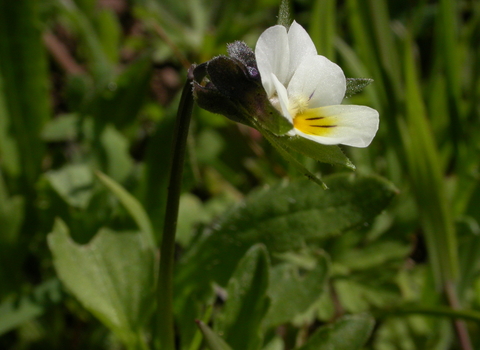
©Philip Precey
Field pansy
With its familiar features, the Field pansy is a delicate version of a garden favourite. Usually creamy-yellow in colour, it can be seen in fields and on roadside verges and waste ground.
Scientific name
Viola arvensisWhen to see
April to OctoberSpecies information
Category
Statistics
Height: up to 15cmCommon.
About
The delicate Field pansy is a wild relative of our garden pansy and can be found in fields and on waste ground and roadside verges - anywhere the ground has been disturbed. Its long-stalked, pale yellow flowers can be found winding their way through the grasses from April to October.Field pansies are annuals, so they live for one growing season, flowering, seeding and dying off. Only the dormant seeds survive, ready for the next season.
